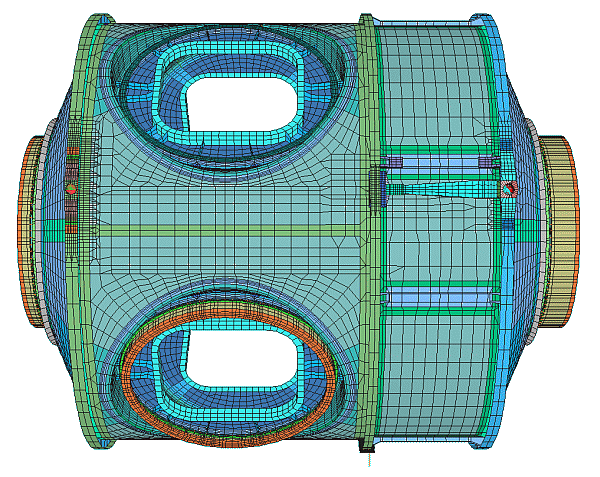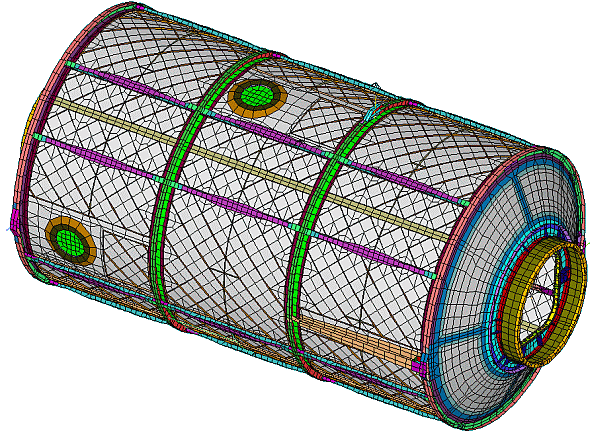
International Space Station
|
While emplyed by Boeing Space Operations in Huntsville I worked on several parts of the Space Station. These included the Node-1 Module, the Lab Module, and the Common Module. I started out in the Loads and Dynamics group where we were responsible for predicting the dynamic response of space station structures during events such as launch, on-orbit operation, and emergency landing. During my tenure at Boeing I built and worked with some of the largest and most complex finite-element models of my career. Below is a dynamic model that I made of the Common Module. Various property groups are colored for easy reference. I made the model by modifying an existing model of the Lab Module. The modifications included adding another window and updating the mesh to give better aggreement with modal test results. The model was made using FEMAP and analyzed using MSC Nastran. Two more views of the model are shown below. The second figure shows some of the internal structures that were modeled. The model simulates the Common Module in its modal test configuration. The modal test was conducted at the Marshall Space Center. The results from the analysis were used to develop the Modal Test Verification Plan. A major concern for such a test is to ensure that all the accelerometers are optimally positioned throughout the structure to effectively capture all the critical mode shapes and frequencies. |

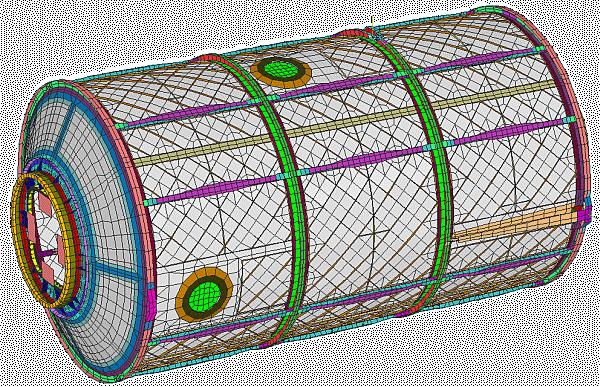
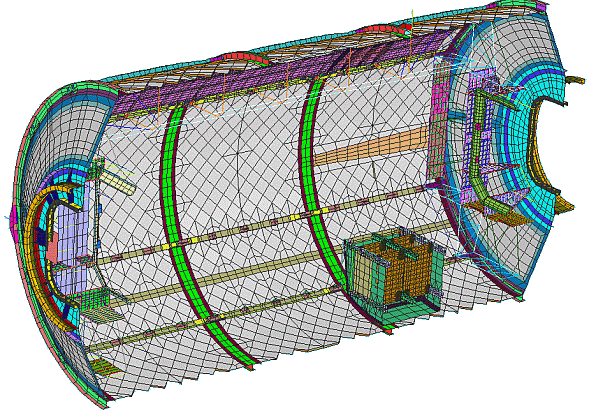
|
Following my assignment with the Loads and Dynamics Group, I moved over to the Stress Group. There I worked on the structural analysis of the Node-1 Bulkheads. My primary job was to assist with correlating the results from static loads tests with Nastran predictions. A successful correlation would mean that the finite-element model was calibrated which increases confidence in the safety margin predictions. Below are several views of the Node finite-element model that I worked with. Like the common module model, this model is very large even by todays standards with well over 50,000 elements and 250,000 degrees of freedom. It took approximately two hours to compute a solution using a Silicon Graphics eight-processor computer with 1 GB of memory. |
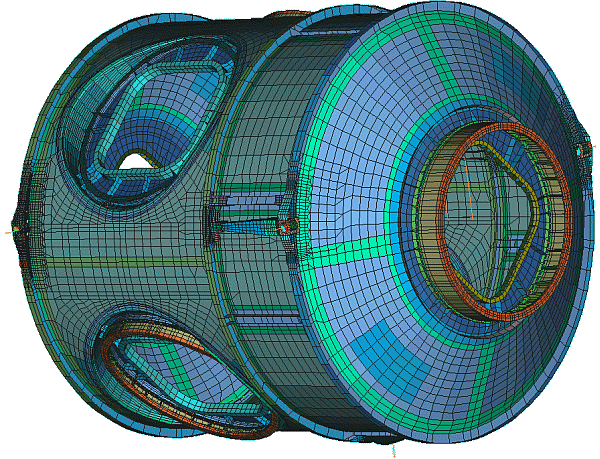
|
Above is an aft view of the Node model. This structure is one of the first parts of the Space Station to put into orbit in early 1999. |
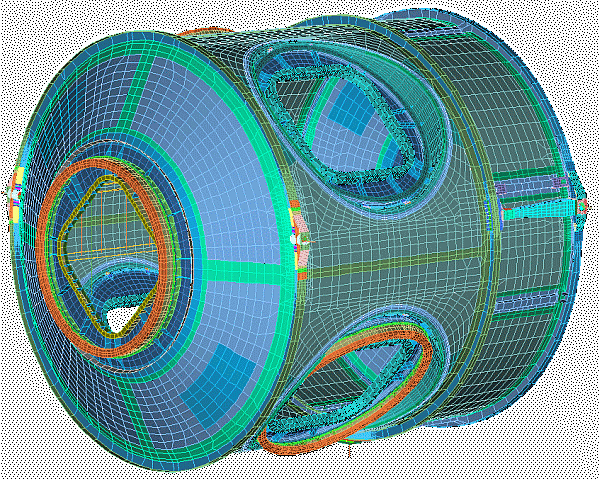
| Above is forward view of the model. |
